1. Start a Fire Fast
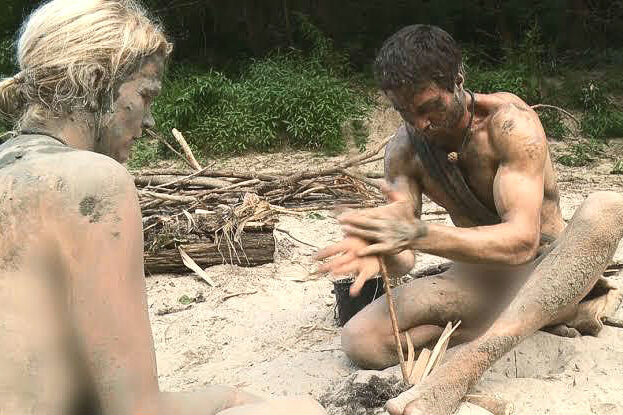
Without matches, your lifeline is fire, whether you’re using flint, friction methods like bow drill, or focusing sunlight through a makeshift lens. Fire allows you to boil water, cook food, stay warm, ward off predators, and boost morale. Contestants in Naked and Afraid almost always make fire their top priority, often building a raised fireplace and canopy to protect it from rain. Begin by gathering dry tinder and kindling of different thicknesses, matchstick-size to thumb-thick, arranged so flames grow gradually. In wet conditions, focus on sourcing dead sticks still attached to trees and clear a safe, open spot free of debris, this all helps ensure your first spark becomes a lasting flame .
2. Know Toxic vs. Edible Plants

One wrong plant identification could end it all. Nature offers a bounty of food, but only if you can distinguish the harmful from the helpful. Contestants who research edible roots, leaves, and berries beforehand and remain cautious in the wild fare much better. A key rule? When in doubt, don’t eat. Some fungi and plants harbor toxins that trigger stomach failure or organ damage. Plus, take time to peel, soak, or cook vegetation properly to remove milder toxins or protect against parasites.
3. Purify Water Religiously
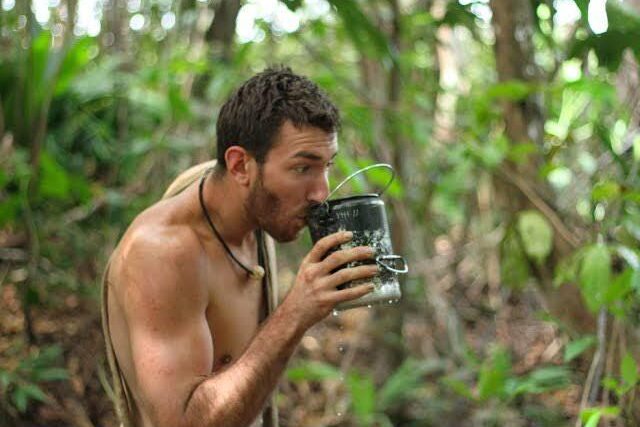
Water is your top survival need, before food or shelter. The human body can’t go more than a few days without it, and in hot climates you’ll lose liters daily . But untreated water is a recipe for diarrhea, infection, or worse. The simplest method? Boil contaminated water for 1–3 minutes, it kills most pathogens . If you can’t bring a pot to the fire, try stone-boiling: heat rocks in the fire until red-hot, then drop them into a container of water to bring it to a boil . If materials allow, filter raw water through layers of charcoal, sand, gravel, then always boil again .
4. Choose a Smart Shelter Spot

Shelter location is more than putting up sticks and leaves, it’s about safety and comfort. A good spot protects you from predators, rising water, wind, and harsh sun or rain . Survivors often build shelters near water but high enough to stay dry in heavy rain, and even sometimes incorporate fire by building stove-like structures within to stay warm . Insulation is key. Use layered vegetation or branches to block wind and trap body heat. Position your shelter to offer cover and visibility, keeping predators at bay while giving you room to maintain your fire safely.
5. Retain Body Heat Without Clothes
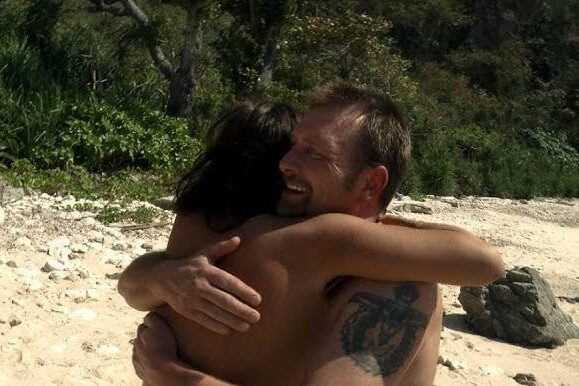
Naked means vulnerability, cold nights, sunburns, and exposure to the elements can all add up. Contestants regularly use their fire to warm shelters or create radiant heat walls to sleep against . For extra insulation, stack leaves or brush beneath you and around your sleeping area to separate from the cold ground. Share body heat with a buddy by sleeping close if allowed. Plus: staying dry matters, moisture saps warmth faster than cold air, so keep your sleeping area sheltered and use natural materials to wick moisture away.
6. Avoid Deadly Bugs

Insects in Naked and Afraid are relentless, not just annoying. Mosquitoes, flies, and parasites can carry diseases or sap your energy through constant bites. Contestants try things like rubbing mud, ash, or crushed local plant resins onto their skin to create a crude insect barrier. Some episodes even reference locals using ash or crushed leaves that naturally repel bugs, but results vary, and many competitors endure countless bites anyway . Still, the most reliable defense is smoke from a fire, whether it’s placed at the camp’s perimeter or burned in small controlled patches to discourage nearby insects. Some participants control-burn leaf litter around their shelter, though that tactic can backfire if wind changes or they’re inexperienced . With nothing else, mental resilience becomes second line defense, enduring buzzing misery overnight can push some contestants to tap out.
7. Strengthen Mental Resilience

Your mind decides your fate. Contestants who view the 21 days as a series of short challenges, day by day, hour by hour, stay calmer and more focused. Breaking each task into small wins (like making fire, collecting water, building a shelter) keeps panic in check. Jake Nodar sums it up: “Break it down. Focus on what you can do in the next hours… don’t let the full weight of the crisis overwhelm you” . The deeper level is mindset training. Techniques like mindfulness, visualization, deep breathing, and practicing gratitude or positive self-talk boost emotional stamina. Studies show mindfulness reduces stress and increases focus, while self-talk (“I’ve got this”) can rewire your mental reaction when fear hits. These techniques help override loneliness, panic, and mental fatigue which end more contestants than hunger does .
8. Stay or Move With Strategy
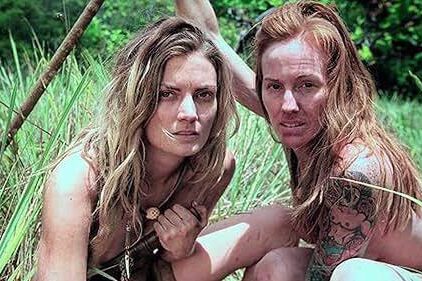
Should you stay in one spot or trek for resources? Wise contestants evaluate surroundings before moving. Building a shelter immediately might seem smart, but many redditors warn that investing heavy energy without knowing how weather patterns, local pests, or terrain behave can backfire. Early settlers might build a shoddy shelter that fails in storms or gets invaded by bugs . The strategy: use early days to survey, gather intel, and conserve calories. Decide based on food availability, water, daylight, and changing weather. Rest when secure, move when food or better camp options appear. Moving too early saps energy, moving too late misses opportunities. Clarity on when to stay versus search is a subtle but critical survival skill.
9. Choose Edible Animal Targets

Eating protein saves you, but choosing which animals to hunt matters. Avoid high-risk targets like venomous snakes or aggressive wildlife that can injure you more than they feed you. Contestants often go for traps or snares targeting rodents, fish, or raccoons, moderate calories with manageable danger. Risk vs. reward must be weighed carefully. Building a snare is energy-efficient and scalable, while trying to spear large animals often drains strength for little payoff. Some early exits happen because participants overcommit to dangerous hunts without tools or enough knowledge. Steady, low-risk approaches to food (gathering insects, small mammals, fishing) win more than big ambitions gone wrong.
10. Craft Tools from What’s There
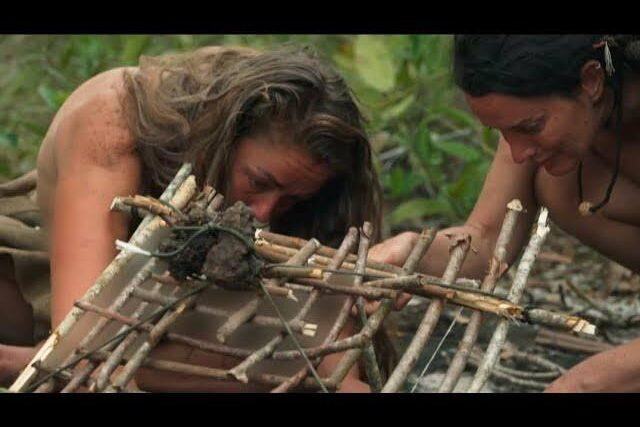
You may start with nothing, but the right tools, knife, spear, digging implement, can transform your game. Contestants fashion cutting tools from sharp rocks, knife-like blades from shells or bones, and spears from straight sticks. A sharp rock tied to a stick becomes utility knife; slender hardwood becomes a fishing spear or digging stick. These basic tools improve your efficiency: sharper edge = faster fire prep, spear = catch fish with less effort, digging stick = access roots or tubers. Turning natural materials into even the simplest implements multiplies your ability to gather food, extract water, and increase overall survival chances. It’s creativity under pressure that separates survivors from quitters.
11. Treat Cuts and Remove Thorns
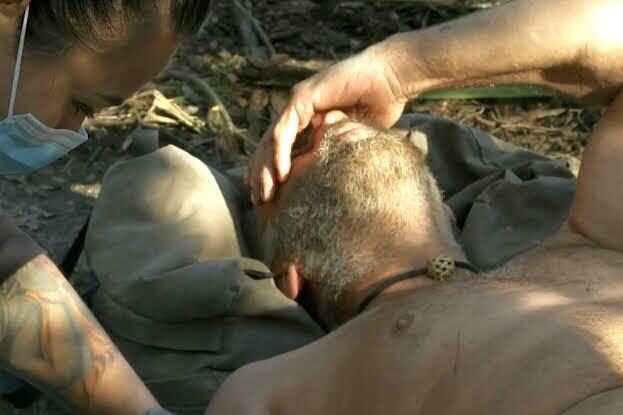
Accidents happen: a sharp rock or thorn can puncture skin, opening the door to infection. On Naked and Afraid, contestants often have to improvise. Reddit users note that medics typically use super‑glue rather than stitches when possible, since it stays intact even when wet and helps them keep using that hand or limb . But when glue isn’t enough, you may have to self‑suture. In one tutorial, a survival expert demonstrates how to sterilize a needle (from a thorn or plant), push carefully through clean skin, tie firm knots, and then monitor for infection signs, redness, swelling, discharge. You must clean the wound regularly, avoid reopening it, and remove non‑absorbable stitches as soon as the stitch line starts healing to reduce risk.
12. Balance Risk and Reward

Every decision, from hunting game to shifting camp, carries costs. Chasing a boar that might maul you isn’t worth it if a handful of crabs would give fewer calories but keep your limbs intact and spirit intact. Contestants survive longest by choosing moderate‑risk food: small mammals, fish, clams, or insects. It’s the same with moving camp. If your current site floods or dries up, retrace small distances for better water or food. But trekking far without water or shelter is a path to exhaustion or becoming lost. The best survivors assess surroundings daily, create simple traps, scout a little, and then harvest steadily so risk never outweighs reward.
This story 12 Things You’d Need to Know to Survive on the TV Show “Naked and Afraid” was first published on Daily FETCH


